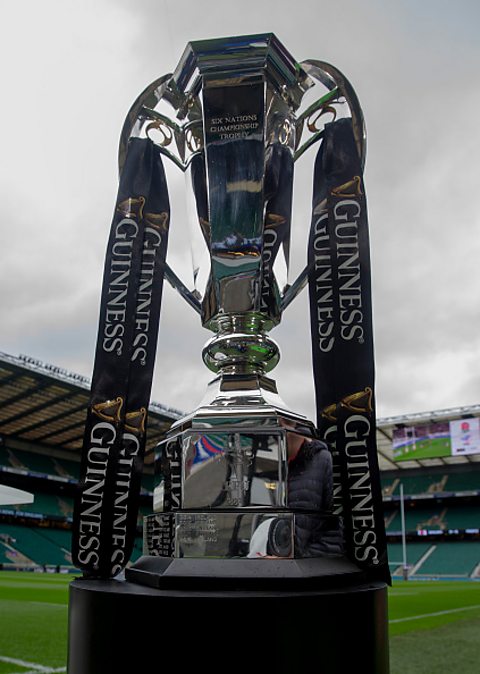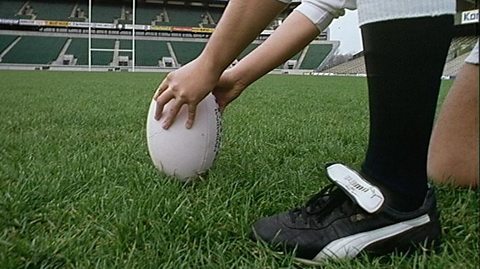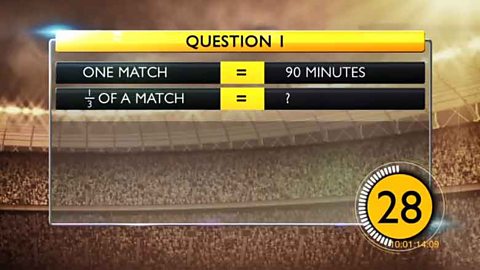On 2 February, this year's Six Nations rugby union competition gets underway between reigning champions Ireland, England, Wales, Scotland, France and Italy.
The ins and outs of the competition will grip us as we follow it to its conclusion on Saturday 16 March, but not all of us are experts when it comes to the ins and outs of rugby itself. If youвҖҷve ever wondered why teams of 15 grown adults chase an oddly shaped ball around a field and want to blag your way through a match, read on.
Was rugby created in Rugby, England?
Although rugby in various forms was played as far back as the Middle Ages, it is generally accepted that the modern game did indeed begin in the 1820s at Rugby School in Rugby, Warwickshire.

It was here, in 1823, that pupil William Webb Ellis was said to have run with the ball in his hands thus introducing the form of play we see today. The incident is considered romantic myth by some experts but what is true is that pupils from the school wrote down the rules of the game in 1845. Terms such as вҖҳtryвҖҷ, вҖҳoffsideвҖҷ, вҖҳknock onвҖҷ, вҖҳtouchвҖҷ and вҖҳgoal lineвҖҷ were all coined at Rugby, as was the concept of half-time. The Rugby Football Union (RFU) was formed in 1871, with its first five presidents all Rugby School old boys.
Regardless of historical fact, William Webb Ellis is guaranteed to be associated with the sport forever as the Rugby World Cup trophy bears his name.

Why is the ball that shape?
Casual observers may describe a rugby ball as egg-shaped but the correct term is вҖҳelongated ellipsoidвҖҷ which is basically a pointy oval form.
In the 19th century, rugby balls were made from inflated pigsвҖҷ bladders encased in leather. The shape of the bladder determined the shape of the ball although the originals didnвҖҷt taper at the ends as much as todayвҖҷs equivalents and were more spherical.
The Rugby Football Union decreed in 1892 that the ball should be oval and the shape gradually became flatter. ItвҖҷs believed the shape became more elongated to meet the dual needs of kicking and carrying the ball throughout a match.

WhatвҖҷs the difference between rugby league and union?
Make sure you get this one right. The вҖҳschismвҖҷ, as itвҖҷs known in rugby circles, started with a row over money. The RFU rules, written in 1871, forbade rugby being a professional game, but by the 1890s some players in Yorkshire were being paid to appear at matches to compensate for missing a dayвҖҷs wage.

This led to a split between the RFU and clubs in Yorkshire and Lancashire. The Northern Rugby Football Union was formed to incorporate these breakaway clubs and over time they developed their own style of play - which became known as rugby league.
There are several differences between the two games. Whereas union has 15 players to a team, league has 13. In league, each team can make 10 substitutions during a game as opposed to a maximum of eight in union.
Scoring is different too. A try in union is worth five points, itвҖҷs four in league although a conversion will earn you an extra two points in either code.
In league, a drop goal earns you one point, a penalty is two. In union they are both worth three.

Why is it вҖҳSixвҖҷ Nations?
The tournament has been known as the Six Nations since 2000, when Italy joined - before that it was the вҖҳFiveвҖҷ Nations of Wales, Ireland, Scotland, England and France.
The format of the competition goes back to 1883 and the first Home International Championship between England, Wales, Scotland and Ireland. France joined in 1910, leading to the creation of the Five Nations title. The competition was suspended during both World Wars and France didnвҖҷt take part between 1931 and 1947.
Who has won the Six Nations the most?
Taking the tournament history as a whole, since it began as the Home Nations Championship in 1883, Wales has 28 wins and 11 shared titles while England has 29 outright wins in the competition since 1883 and 10 shared wins. Italy has yet to win the tournament since its debut in 2000 and Scotland is also waiting to take the title since the number of competing nations expanded to six.
The 1973 Five Nations tournament is notable in that it ended with all five competitors: France, Ireland, Scotland, England and Wales, sharing the title as joint winners.
What is the Wooden Spoon?
ItвҖҷs the prize nobody wants, the award given to the team at the bottom of the table when the tournamentвҖҷs over.
Since 1883, every nation has taken home the wooden spoon. Ireland has вҖҳspoonedвҖҷ the most, finishing last on 29 occasions, the most recent being 1998. Scotland is next on 21, then England on 19, Wales on 16 and France on 12. Neither Ireland nor England have finished last since the tournament became the Six Nations.
The same canвҖҷt be said for poor Italy. TheyвҖҷve earned that wooden spoon 18 times in just 24 appearances.
When did the women's Six Nations start?
Launched in 1996, the women's competition was initially between the four home nations. France joined in 1999 to make it a Five Nations then Spain took part in 2000 to bring the competitors up to six.
In 2007, the women's competition became part of the official Six Nations programme, seeing Spain drop out of the tournament and Italy take its place. England have an impressive record in this competition with 19 outright wins in the 28 tournaments held so far, and are the reigning champions. France have taken the trophy six times with Ireland winning it twice and Scotland securing one victory. Wales and Italy are patiently awaiting their maiden title. In 2021, it ran as a reduced tournament due to the Covid-19 pandemic, beginning in April.
The Women's Rugby World Cup began in 1991, hosted by Wales and won by the United States. New Zealand has dominated the competition, however, winning six of the nine tournaments thus far, with England taking the title on two occasions.
This article was published in March 2019 and last updated in January 2024

Essential rugby union skills
Want to be the next Jonny May? Read this first.

Stages of a football medical
The process which can make transfer deadline very interesting.

Maths of the Day big fixture
Testing out those football fraction skills
